By Cheryl Critchley
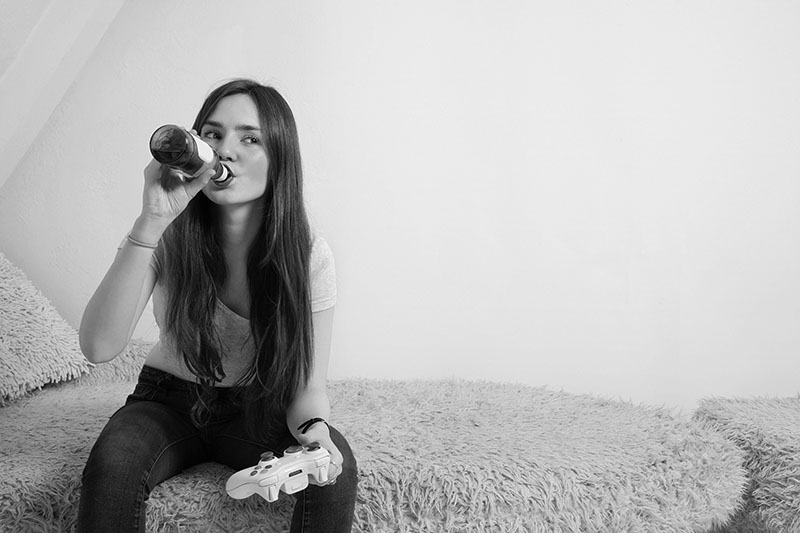
LEAD BY EXAMPLE
Children look to their parents to set standards. Parental attitudes to drinking have a big influence on
their children. There is nothing wrong with having a drink, but parents need to be aware that their alcohol habits are observed by their children, who may take a lead from their behaviour.
MYTH: Allowing under-18s to drink will “ease them into it”
FACT: Alcohol can be damaging to young, developing brains. Early drinking is also linked to increased alcohol consumption in adolescence and young adulthood and the possibility of damage to the developing brain and development of alcohol related harms in adulthood.
DRINKING CAN POSE UNACCEPTABLE RISKS IN YOUNG PEOPLE’S FORMATIVE YEARS
Parents may think they are doing their children a favour by letting them drink alcohol before they turn 18, particularly if it is supervised. But a growing body of evidence suggests that alcohol can damage developing young brains, which don’t mature until about 27.
Early drinking can also lead to increased drinking rates and damaging behaviour. The risk of accidents, injuries, violence and self-harm are high among drinkers aged under 18. Young people who drink are also more prone to risky and antisocial behaviour than older drinkers.
National Health and Medical Research Council (NHMRC) guidelines recommend that not drinking alcohol is the best option for those under 18. For those under 15, this is especially important, and for those aged 15-17 drinking should be delayed as long as possible.
Experts also advise parents to discourage their children from abusing alcohol by modelling safe behaviours at home and while socialising. Many parents don’t realise the influence their own drinking habits can have on their children and how important it is to model responsible alcohol use. It is important to be informed about the possible risks and to be aware that your child is
learning from your behaviour.
ALCOHOL IS NOT HARMLESS
Family Drug Support founder and CEO Tony Trimingham says alcohol should not be regarded as less harmful than other drugs. He says it is responsible for one in five hospital admissions, one in three drownings, one in four motor-vehicle accidents, three in four assaults, one in three divorces, domestic violence, sexual assault, unplanned sex, homelessness and suicide. The later young people start drinking, the less likely they are to develop severe issues.
Trimingham talks at many schools and believes 85 per cent of students have tried alcohol and more than 50 per cent drink regularly and to the point of intoxication. “It is without any question the most damaging drug that we use. Many parents turn a blind eye or even encourage underage drinking. Of course teenagers will use it, but … we should not actively promote it.”
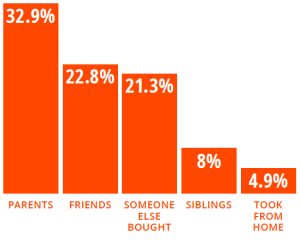
Australian secondary school students’ use of tobacco, alcohol, and over-the-counter and illicit substances in 2011. Prepared for the Australian Government Department of Health and Ageing by the The Cancer Council Victoria, December, 2012.
WHERE ARE KIDS GETTING IT? +
Adolescents aged 12 to 17 are most likely to get alcohol from their parents. A 2011 Australian school student survey found almost 33 per cent of 12 to 17-year-olds received their last alcoholic drink from their parents, compared with 22.8 per cent from friends, 21.3 per cent from someone else and 8 per cent from siblings.
Almost 5 per cent took their last alcoholic drink from home.
WARNING SIGNS A TEEN MAY BE MISUSING ALCOHOL
There are no definitive warning signs of alcohol misuse. But there are a range of signs and behaviours that, combined, may indicate excessive drinking. They include:
- Repeated health complaints.
- Changes in sleeping patterns.
- Changes in mood, especially irritability.
- Starting arguments, withdrawing from the family or breaking
family rules. - Dropping grades, frequent school absences or discipline
problems at school. - Changes in social activities and social groups.
WHO IS DRINKING ALCOHOL? +
Three in four (74 per cent) Australian children aged 12 to 17 have tried alcohol. The 2011 Australian secondary students’ survey found more than half of those surveyed had consumed alcohol in the past year. Almost 40 per cent of 17-year-old boys and 35 per cent of girls had drunk in the past week.
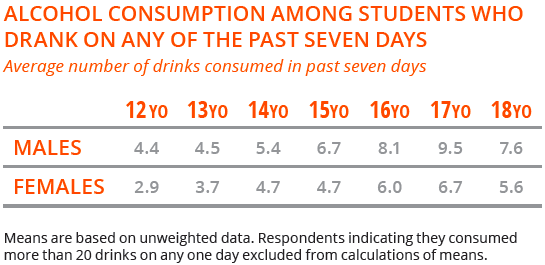
Australian secondary school students’ use of tobacco, alcohol, and over-the-counter and illicit substances in 2011. Prepared for the Australian Government Department of Health and Ageing by the The Cancer Council Victoria, December, 2012.
The proportion of people aged 14 and over who don’t drink alcohol rose from 19.9 per cent in 2010 to 22 per cent in 2013. Of those aged 12 to 17, 72 per cent abstained, up from 64 per cent. But the National Drug Strategy Household Survey found almost four in 10 Australians aged 14 and over put themselves at risk of injury while drinking in the past year. One in four did so as often as monthly.
Binge drinking remains a problem. In 2013, about one in six (15.6 per cent) people aged 12 or older had consumed 11 or more standard drinks on a single occasion in the past 12 months. One in 15 (7.3 per cent) had in the last month.
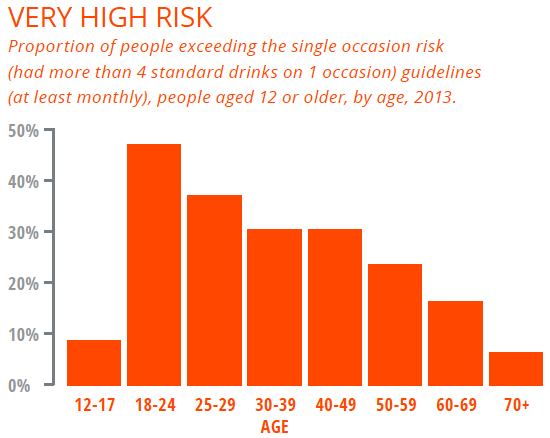
National Drug Strategy Household Survey detailed report 2013. Australian Institute of Health and Welfare 2014.
SUPPLYING ALCOHOL TO MINORS
Under Victoria’s Liquor Control Reform Act 1998, a person must not supply liquor to a minor aged under 18 and a minor must not receive, possess or consume liquor. It is an offence for adults to supply alcohol to a minor in a private home without parental consent. Adults must therefore have parental consent before supplying alcohol to their child’s friends in their own home. An adult who breaks this law faces the same penalty as licensees who supply alcohol to minors in licensed venues – a maximum more than $7000.
TIPS FOR PARENTS
Parents can model responsible drinking by following these tips:
- Limit your alcohol use, especially in front of your children.
- Do not get drunk, especially in front of your children.
- Sometimes decline the offer of alcohol.
- Provide food and non-alcoholic beverages if making alcohol available to guests.
- Never drink and drive.
- Do not let other adults drive after they have been drinking.
- Do not convey to your children the idea that alcohol is fun or glamorous through stories about your own or
others’ drinking. - Use healthy ways to cope with stress without alcohol, such as exercise, listening to music, or talking things over.
- Talk about alcohol issues.
- Establish family rules.
- Have consequences when rules are broken.
- Monitor your child.
- Prepare for peer influence.
- Encourage positive friendships.
- Enlist the support of other parents.
- Prepare your child for a range of drinking scenarios such as being around drunk people.
- Discuss drink spiking and other dangers.
- Warn about drink driving.
- Never supply alcohol to your adolescent’s friends.
- Give positive feedback if they act responsibly.
- Discuss any concerns you have.
+ Australian secondary school students’ use of tobacco, alcohol, and over-the-counter and illicit substances in 2011. Prepared for the Australian Government Department of Health and Ageing by the The Cancer Council Victoria, December, 2012.
Drugs 101 is an informative resource that offers expert advice about drugs and how to start a conversation about them with your kids. It profiles people touched by addiction and explains what drugs are, how they work, their risks and how many young people use them. Purchase a copy and start the conversation now.


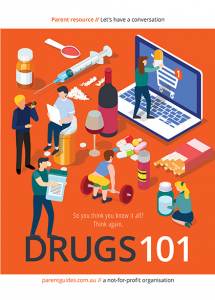
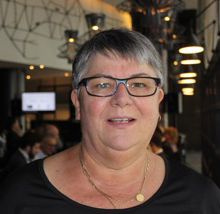
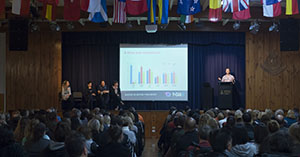
Comments (3)
Comments are closed.